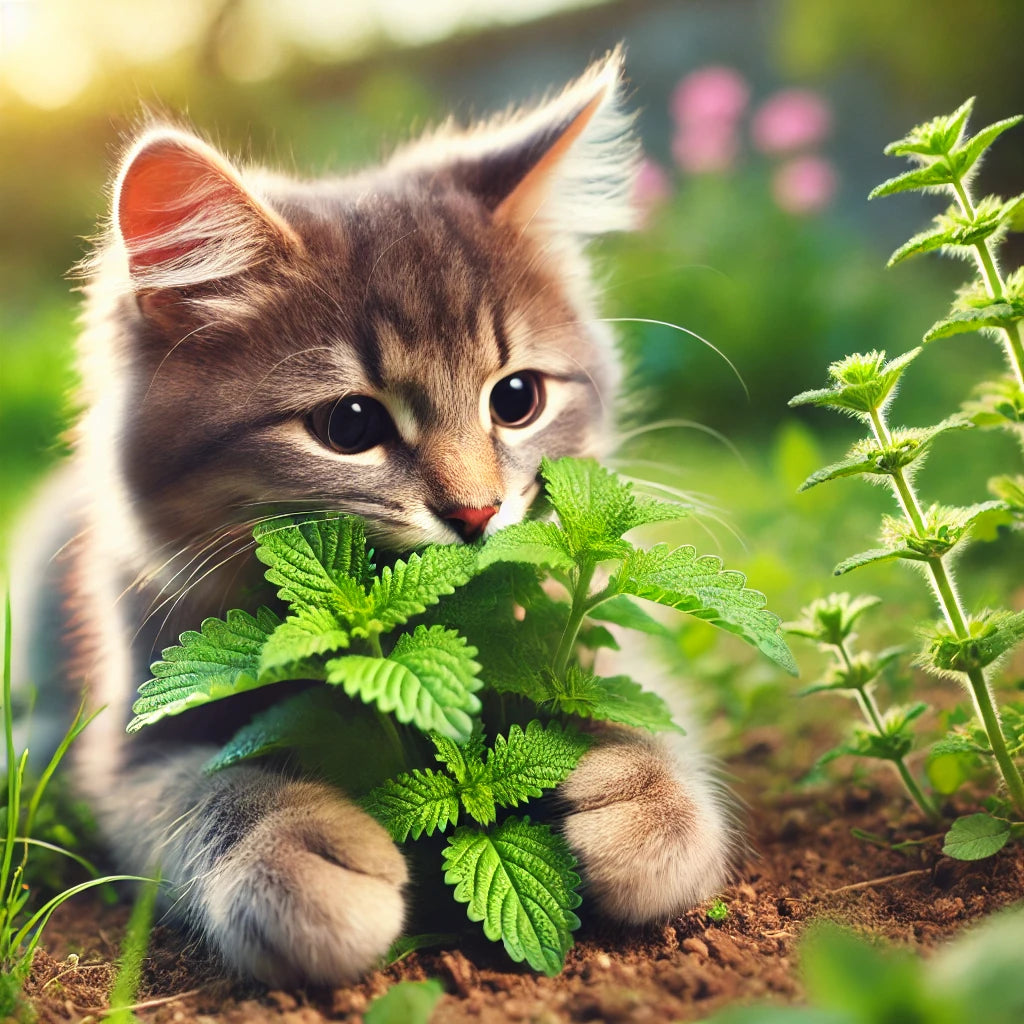Catnip vs. Catmint: Benefits, Uses, and Why Some Cats Don’t Respond
MacKenzie Tervol
Share
The Benefits of Catnip and Catmint for Cats, How to Use Them, and Why Some Cats Don’t React
Catnip and catmint are well-known favorites among cat owners, providing entertainment and enrichment for our feline friends. While the two herbs are closely related, they each offer unique benefits. In this post, we'll dive into what makes catnip and catmint so appealing, how to use them, and why not all cats react the same way.
What is Catnip?
Catnip (Nepeta cataria) belongs to the mint family and contains a chemical compound called nepetalactone. This compound triggers a response in many cats, leading to playful, hyperactive behavior, or a state of calm relaxation. The effects usually last between 5 to 15 minutes, after which the cat becomes temporarily immune to the plant's effects.
What is Catmint?
Catmint is a close relative of catnip, belonging to the same family but with a milder scent. Although catmint (Nepeta mussinii) contains nepetalactone, it is typically less concentrated. This makes catmint a gentler option for cats who might get overstimulated by regular catnip.
Benefits of Catnip and Catmint
Encourages Exercise: Cats often become more playful after exposure to catnip or catmint. This encourages physical activity, which is particularly beneficial for indoor cats who may not have access to outdoor spaces.Reduces Stress: For some cats, catnip and catmint can have a calming effect. Sprinkling a small amount of dried catnip on their bed or scratching post can help alleviate anxiety, especially during stressful times such as moving or visiting the vet.
Behavioral Training: These herbs can be used to redirect your cat’s attention to desirable objects, such as scratching posts or toys, instead of furniture. This is especially helpful when you’re trying to teach your cat where to scratch or play.
Mental Stimulation: Offering catnip or catmint toys provides mental enrichment, which can prevent boredom. Cats may spend hours playing or lounging in an area that has been sprinkled with the herbs, providing entertainment and relaxation.
How to Use Catnip and Catmint
- Sprinkle it: You can sprinkle dried catnip or catmint on your cat’s toys, bed, or scratching posts.
- Catnip Toys: Fill soft fabric toys with dried catnip or catmint to make DIY cat toys that keep your cat engaged.
- Catnip Spray: Catnip is also available in spray form, which can be applied to different surfaces to encourage playful behavior.
- Grow Your Own: Both catnip and catmint are easy to grow in pots or gardens. Cats may enjoy brushing against or chewing the fresh leaves.
Why Some Cats Don’t React
Interestingly, not all cats are affected by catnip or catmint. This reaction is genetic, and about 30% to 50% of cats lack the gene that causes them to respond to nepetalactone. Kittens under six months old and senior cats are also less likely to show interest, as their response may diminish with age. Even in cats that do respond, repeated exposure can dull their sensitivity, so it's important to limit how frequently you offer it.
Conclusion
Catnip and catmint are fantastic natural ways to stimulate and enrich your cat’s life. Whether you want to provide mental stimulation, reduce anxiety, or encourage exercise, these herbs offer several benefits. Just remember, not all cats will react the same way, so don’t be concerned if your cat doesn’t seem interested—there are plenty of other ways to keep them entertained!
